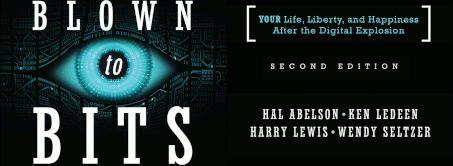We passed another milestone on the road to digital copyright sanity yesterday when Apple announced that it would be removing Digital Rights Management (DRM) from the music in the iTunes Music Store catalog by the end of the first quarter. Along with that, Apple backed off its insistence that all tracks should cost the same: big hits will cost more in the new pricing scheme.
So in a couple of months, there will be 10 million iTunes songs available for purchase on line, songs that can be freely copied from one player to another. This plays out the scenario that began two years ago with Steve Jobs’s public letter to the recording industry proposing that they relax the licensing restrictions that required iTunes to implement DRM. We’ve come a long way since February 2007, when the recording industry’s response was to flat-out reject Jobs’s proposal was ‚Äúcompletely without logic or merit,‚Äù in the words of Warner Music CEO Edgar Bronfman.
Yesterday’s announcement was welcome news, but not a big surprise. Apple had already been offering a limited number of DRM-free tracks; consumers had shown a preference for them and were even willing to pay a premium for them. And of course, the big breakthrough, as documented in Blown to Bits, came in the fall of 2007 when Amazon began selling DRM-free tracks.
I’ve never bought any music from the iTunes store. I didn’t want to include tracks in my music library where I have to worry about whether I can move them between my iMac and my PC and my GNU/Linux box, copy them to my portable MP3 player or my cell phone, or extract a few seconds of music for a sound effect or background to a video. But once Apple switches over, I’ll happily become an iTunes Music Store customer.
I bet I’m not alone in this reaction. The New York Times article that reported the announcement included:
The music companies are hoping that their eagerly awaited compromise with Apple will give a lift to digital downloads. They will be able to make more money on their best-selling songs and increase the appeal of older ones.
Hallelujah! After a decade of fighting the Internet and Internet users, the recording industry is finally getting the message: Letting go of restrictions on the use of your product can make your product more valuable and more popular, to the degree that you’ll end of making more money, even allowing for an increase in ‚Äúleakage‚Äù when the restrictions are lifted. Hopefully, we’ll see that scenario play out with on-line music.
The next group that needs to get the ‚ÄúDRM is dumb‚Äù message is the movie industry. And despite the encouraging developments in music, this will still be a long haul. As we explained in B2B, DRM is the muscle behind the studios effective control over digital video consumer technology, letting them veto new features that they don’t like. Weaning them away from that privileged position will be tough.
As always, the group that most needs to get the message is Congress, whose Digital Millennium Copyright Act, with its anti-circumvention provision, is the lynch-pin of the entire anti-technology, anti-competitive contraption. That damper on innovation is precisely what we don’t need at a time when it’s more important than ever to to foster competitiveness. As we wrote in B2B, the Internet does not have to become your enemy ‚Äì unless you make it your enemy. We’re seeing a truce emerge around music. Video is still a ways away, but we can expect that the realities of the marketplace will let rationality emerge there, too. But Congress has never been a paragon of rationality, and laws passed in the grip of copyright hysteria and not easily overturned.
